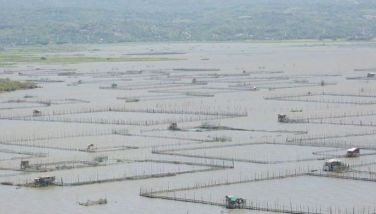News Analysis: Revised dev't plan to focus on poverty, unemployment
MANILA, Philippines (Xinhua) - The revised Philippine Development Plan (PDP) will focus on poverty alleviation and job creation, areas that the administration of Philippine President Benigno Aquino III has not fully addressed despite rapid economic growth in recent years.
A summary of the plan released to the media said the Aquino administration will concentrate on increased infrastructure spending to create more jobs. Other reforms will also be implemented to make the benefits of economic growth filter down to the poorest sector of the population.
Despite economic growth of more than 7 percent in recent years, among the highest rates in Asia, the country's jobless rate continued to rise and more Filipinos became poor, some even experiencing hunger.
"Simply stated, the gains have yet to materialize into actual, tangible improvements in the lives of the majority of the people," the report said.
Under the revised plan, the economy is expected to grow 6.5 to 7.5 percent this year, 7 to 8 percent next year and 7.5 to 8.5 percent in 2016.
"The strategies in the PDP midterm update are directed at improving the responsiveness of poverty to growth (which implies higher incomes), enhancing the provision of basic services (so that quality of life is improved) and increasing resilience to disasters (so that improved quality of life is maintained)," the PDP summary said.
In order to create jobs and fight poverty, the plan calls for an increase in infrastructure spending to 5 percent of gross domestic product by 2016, compared with the 2013 level of less than 3 percent.
Under the plan, the new target is to lower the poverty incidence from 25.2 percent of the population in 2012 to 16.6 percent by 2016.
Foreign investors have long cited the country's poor infrastructure, such as in power, transport, roads, airports and seaports, as the biggest obstacles to development in the countryside where most of the country's poor live.
According to University of Asia and the Pacific economist Cid L. Terosa, infrastructure spending would generate multiplier effects and create jobs needed to reduce poverty incidence. "The reduction of poverty creates more funds for infrastructure spending in the long run," Terosa said.
But Benjamin E. Diokno, University of the Philippines economics professor, pointed out that if the slow implementation of the much- touted public-private partnership initiative was any indication, the implementation of the updated PDP would likely be sluggish.
"So far, for the last three and a half years, the administration has consistently failed to implement what little has been budgeted. It has to demonstrate better capability to complete projects," Diokno, a former budget secretary, told the media.
Meanwhile, Deputy Governor Diwa Guinigundo of the Bangko Sentral ng Pilipinas, the country's central bank, said that the Philippines is expected to attract more foreign investors, particularly those who are willing to stay for the long haul, as the local economy continues to grow despite challenges abroad.
Guinigundo said that the growth in foreign direct investments seen in January of the year would likely be sustained in the coming months.
"I don't see any reason why not. Investments came in and, in fact, that was during challenging times when we saw portfolio outflows due to the US Fed's actions," Guinigundo said.
The latest data from the central bank showed that long-term investments in the country rose by 5.3 percent to over $1 billion in January.
Foreign direct investments come in the form of multinationals lending money or keeping profits with their Philippine subsidiaries, as well as new investments in the country for the purchase of new equipment and construction of facilities.
But portfolio investments continued their exodus from the country with the net outflow reaching $2.143 billion in the January to March period from $1.086 billion in the same period last year.
Guinigundo explained that this was the negative effect of the sentiment on the US Fed and some other geopolitical issues in Ukraine and Crimea. "These add volatility in the market," he said.
The US Federal Reserve expects to continue cutting back its economic stimulus, whereas the situation in Ukraine and Russia remains volatile.
The central bank data show that year-to-date, total portfolio inflows declined 37 percent to $4.8 billion at end-March from $7.262 billion in the same period last year. Outflows increased by 13.1 percent to $6.9 billion from $6.1 billion over the same period.
Portfolio funds are also called "hot money" because they easily enter and leave, driven by the slightest change in sentiment towards a country.
- Latest
- Trending




























